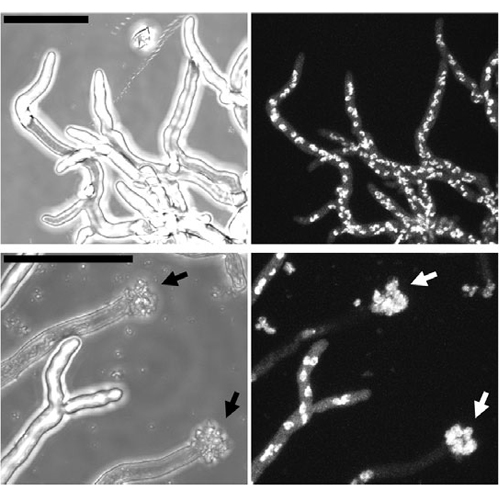Farnesol misplaces tip-localized Rho proteins and inhibits cell wall integrity signalling in Aspergillus fumigatus
11-May-2010
Molecular Microbiology, 2010, doi:10.1111/j.1365-2958.2010.07170.x, Volume 76, Issue 5, Pages 1191-1204 published on 11.05.2010
Molecular Microbiology, online article
Molecular Microbiology, online article
Farnesol is known for inducing apoptosis in some fungi and mammalian cells. To evaluate its potential role as an antifungal agent, we studied its impact on the human pathogen Aspergillus fumigatus. We found that growth of A. fumigatus wild type is inhib- ited, but two cell wall mutants, Dmnt1 and DglfA, are much more susceptible to farnesol. This susceptibil- ity is partially rescued by osmotic stabilization, sug- gesting that farnesol is a cell wall perturbing agent. However, farnesol does not activate but inhibit the cell wall integrity (CWI) pathway. Remarkably, mutants lacking AfMkk2 or AfMpkA, two kinases essential for CWI signalling, are also highly suscep- tible to farnesol, suggesting that its mode of action goes beyond inhibition of CWI signalling. Farnesyl derivatives are known for interfering with the function of prenylated proteins. We analysed the subcellular localization of two prenylated Rho family GTPases, AfRho1 and AfRho3, which are implicated in control- ling CWI and the cytoskeleton. We found that under normal growth conditions AfRho1 and AfRho3 pre- dominantly localize to the hyphal tip. After farnesol treatment this localization is rapidly lost, which is accompanied by swelling of the hyphal tips. Parallel displacement of tropomyosin from the tips suggests a concomitant disorganization of the apical actin cytoskeleton.











